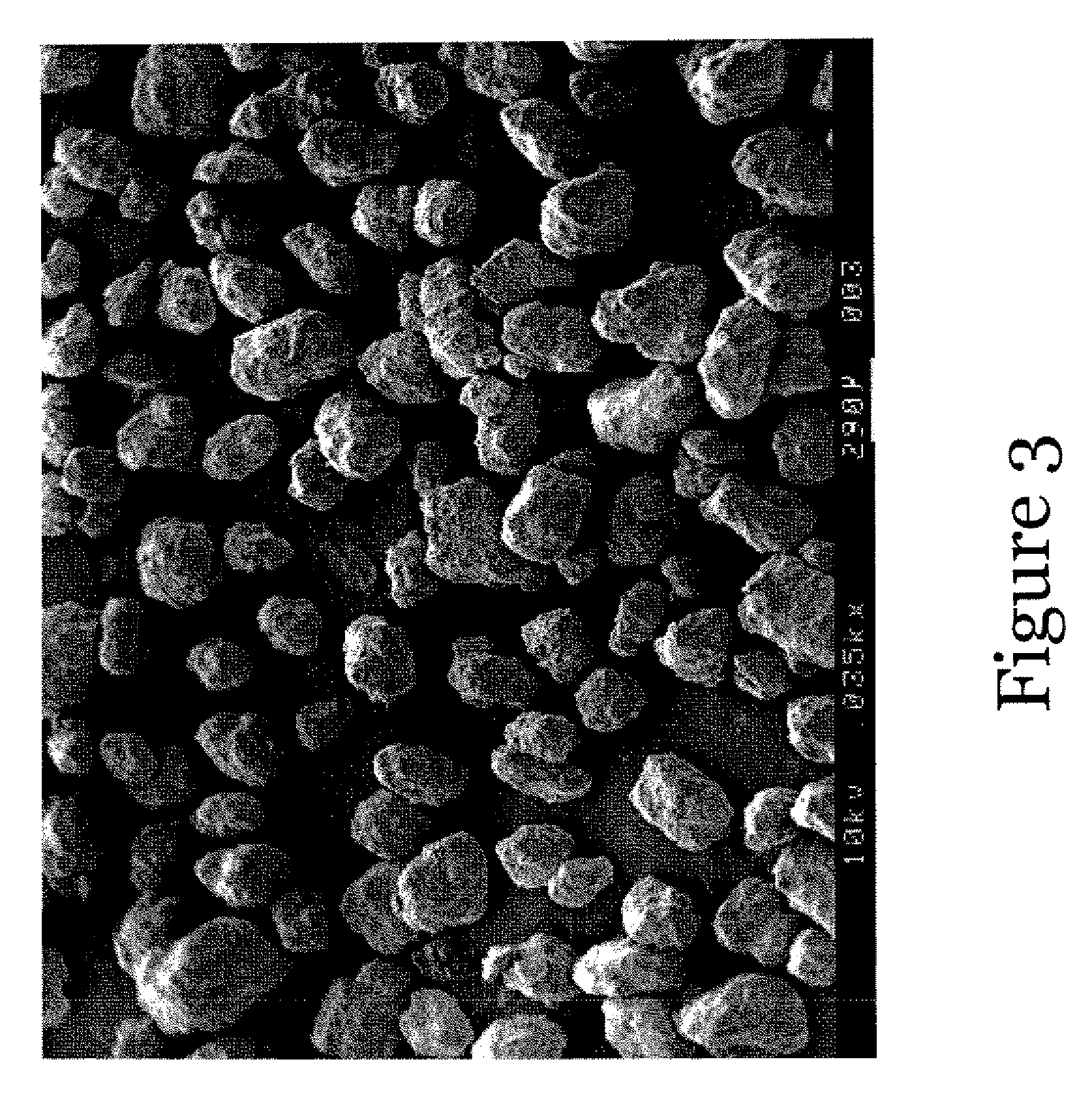Water soluble analgesic formulations and methods for production
a technology of analgesic formulation and water soluble, applied in the direction of drug composition, biocide, dispersed delivery, etc., can solve the problems of limited application, inability to treat the underlying inflammation, and anemia from resultant blood loss, so as to improve stability and bioactivity.
- Summary
- Abstract
- Description
- Claims
- Application Information
AI Technical Summary
Benefits of technology
Problems solved by technology
Method used
Image
Examples
example 1
[0059] Aspirin (625.0 g) was added portionwise to a solution of 1750.0 g of tripotassium citrate monohydrate in 10.0 L of water containing sodium lauryl sulfate (1.5 g). A trace amount of undissolved aspirin was removed by filtration. The resultant clear solution was slowly applied onto 2623.5 g of sucrose using a fluid-bed spray processor (inlet temperature: 45-47° C.; outlet temperature: 38-39° C.). The resulting agglomeration contained granulated product with a median particle size of about 200%. There was no detectable level of salicylic acid using the ferric chloride procedure, which can detect as little as 0.25% hydrolysis. A 5.2 g portion (containing 650 mg of aspirin) of the resultant free-flowing product in 100 ml of water with stirring and mixing was palatable and completely soluble within 15 seconds and gave a pH of 5.87.
example 2
[0060] A mixture of 30.0 g of aspirin, 70.0 g of tripotassium citrate monohydrate, 100.0 g of sucrose and 60 mg of sodium lauryl sulfate was thoroughly shaken on a rocker assembly to ensure homogeneity. The resultant free-flowing product was stable for at least 3 weeks at 50° C. and at least 2 weeks at 75° C. and completely stable to ultraviolet light (254 nm) for at least 1 week. There was no detectable level of salicylic acid using the ferric chloride procedure, which can detect as little as 0.25% hydrolysis. Addition of 3.33 g of the mixture (containing 500 mg of aspirin) to 150 ml of purified water with stirring and mixing was palatable and substantially soluble within 15 seconds, completely soluble in 180 seconds, and gave a pH of 5.67.
example 3
[0061] A mixture of 30.0 g of aspirin, 70.0 g of tripotassium citrate monohydrate, 20.0 g of aspartame and 36 mg of sodium lauryl sulfate was thoroughly shaken on a rocker assembly to ensure homogeneity. The resultant free-flowing product was stable for at least 3 weeks at 50° C. and at least 2 weeks at 75° C. There was no detectable level of salicylic acid using the ferric chloride procedure, which can detect as little as 0.25% hydrolysis. Addition of 2.00 g of the mixture (containing 500 mg of aspirin) to 150 ml of purified water with stirring and mixing was palatable and substantially soluble within 15 seconds, completely soluble in 240 seconds, and gave a pH of 5.93.
PUM
| Property | Measurement | Unit |
|---|---|---|
| concentrations | aaaaa | aaaaa |
| temperature | aaaaa | aaaaa |
| inlet temperature | aaaaa | aaaaa |
Abstract
Description
Claims
Application Information
 Login to View More
Login to View More - R&D
- Intellectual Property
- Life Sciences
- Materials
- Tech Scout
- Unparalleled Data Quality
- Higher Quality Content
- 60% Fewer Hallucinations
Browse by: Latest US Patents, China's latest patents, Technical Efficacy Thesaurus, Application Domain, Technology Topic, Popular Technical Reports.
© 2025 PatSnap. All rights reserved.Legal|Privacy policy|Modern Slavery Act Transparency Statement|Sitemap|About US| Contact US: help@patsnap.com



